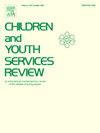莫桑比克预防儿童虐待的社区准备:对国家一级和马普托市主要举报人的调查
IF 2.4
2区 社会学
Q1 FAMILY STUDIES
引用次数: 0
摘要
背景:需要对儿童虐待预防(CM)利益攸关方进行评估,以确定高危环境中的准备程度和需要特别注意的方面。虽然提出了衡量社区准备程度的工具,但在低收入国家实施的却很少。这适用于莫桑比克,该国的预防CM法已经实施了一段时间。目的评估莫桑比克利益相关者预防CM的准备情况,包括国家一级和“地方”一级,马普托市。访谈了国家(n = 11)和“地方”(n = 7)层面的参与者和18个关键利益相关者。马普托是莫桑比克的首都,也是人口最多的城市;它也是11个省之一。方法基于问卷调查,本研究采用了世卫组织预防儿童虐待十维度准备评估(RAP-CM)工具。社区预防CM准备程度的平均得分是按整体和维度编制的,所有受访者分别为国家和马普托的受访者。结果总体社区准备程度为5.4分(满分10分);来自该国和马普托的利益攸关方的情况具有可比性。达到的维度特定分数从模糊的意识到启动工作各不相同。4个10方面的得分低于总体平均水平(当前方案;科学数据;物质资源;和人力和技术资源)和六个等于或高于它(解决问题的意愿;机构联系和资源;非正式社会资源;的态度;立法和知识)。来自国家和马普托的利益相关者在得分上没有显著差异。结论需要加强物质、人力和技术资源,作为该国在解决CM方面超越准备阶段的先决条件。该国将受益于与其他与暴力有关领域的发展的协同增效作用,并投资于协调各种广泛的干预措施。本文章由计算机程序翻译,如有差异,请以英文原文为准。
Community readiness to prevent child maltreatment in Mozambique: An investigation among key informants at country level and from Maputo city
Background
Prevention of child maltreatment (CM) stakeholder assessments are required to determine the level of readiness and aspects in need of special attention in high-risk settings. Although instruments have been proposed to measure community readiness, few have been implemented in low-income countries. This applies to Mozambique where a CM prevention law has been in place for some time.
Objective
To assess the readiness of Mozambican stakeholders to prevent CM, including ones at national level one “local” level, that of Maputo city.
Participants and setting
Eighteen key stakeholders at national (n = 11) and “local” (n = 7) level were interviewed. Maputo city is Mozambique’s capital and most populated city; it is also one of its 11 provinces.
Methods
Interview-based, the study utilised the WHO 10-dimensional Readiness Assessment for the Prevention of Child Maltreatment (RAP-CM) tool. Average scores of community readiness to prevent CM were compiled overall and by dimension, all respondents aggregated and for the national and, Maputo ones separately.
Results
The overall community readiness was 5.4 out of 10 corresponding to the preparation stage; those of the stakeholders from the country and Maputo were comparable. The dimension-specific scores reached varied from vague awareness to initiation work. Four 10 dimensions scored below the overall average (current programme; scientific data; material resources; and human and technical resources) And six were equal to or above it (will to address the problem; institutional links and resources; informal social resources; attitudes; legislation and knowledge). No remarkable differences emerge in scores between stakeholders from national and Maputo.
Conclusion
Enhanced material, human and technical resources are needed as prerequisite for the country to move beyond the preparation stage with regards to addressing CM. The country would benefit from synergies with developments in other violence-related areas and invest in the coordination of wide-ranging types of intervention.
求助全文
通过发布文献求助,成功后即可免费获取论文全文。
去求助
来源期刊

Children and Youth Services Review
Multiple-
CiteScore
6.30
自引率
6.10%
发文量
303
期刊介绍:
Children and Youth Services Review is an interdisciplinary forum for critical scholarship regarding service programs for children and youth. The journal will publish full-length articles, current research and policy notes, and book reviews.
 求助内容:
求助内容: 应助结果提醒方式:
应助结果提醒方式:


